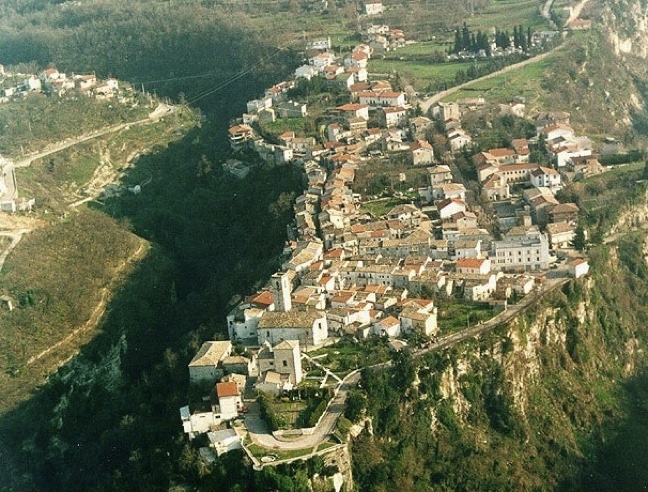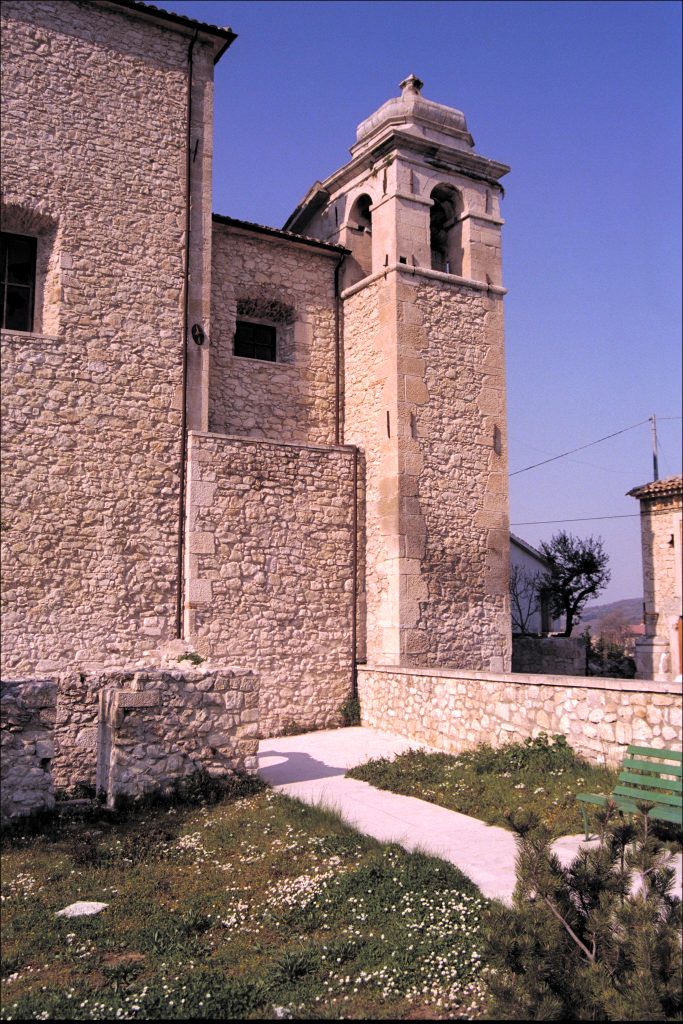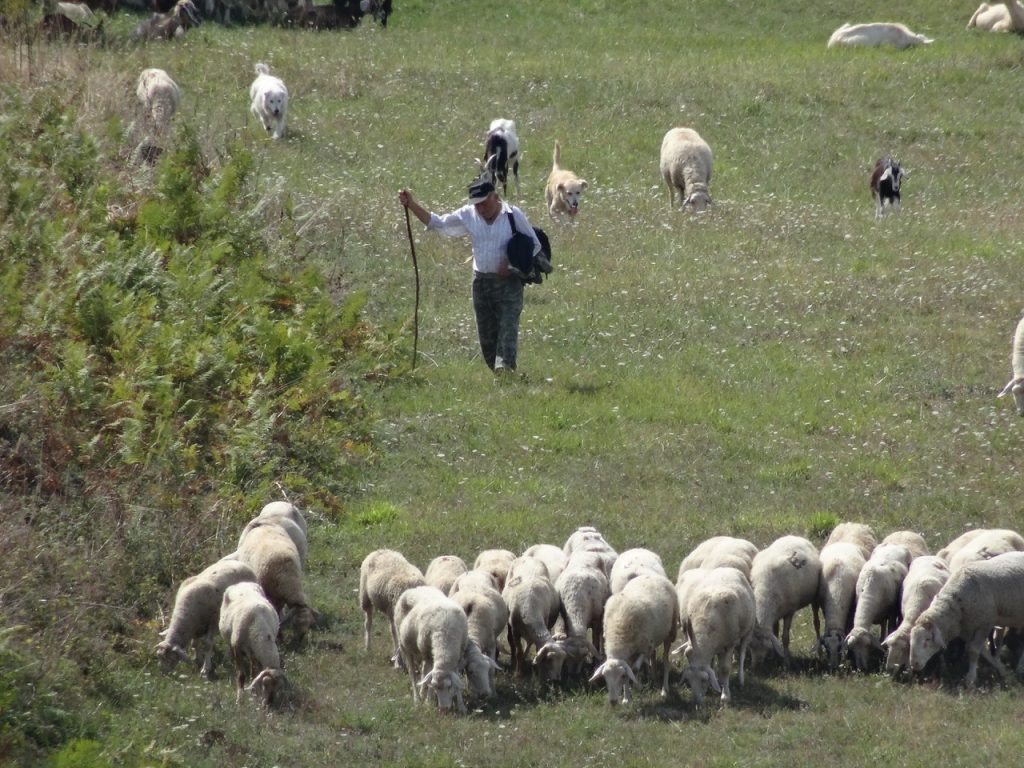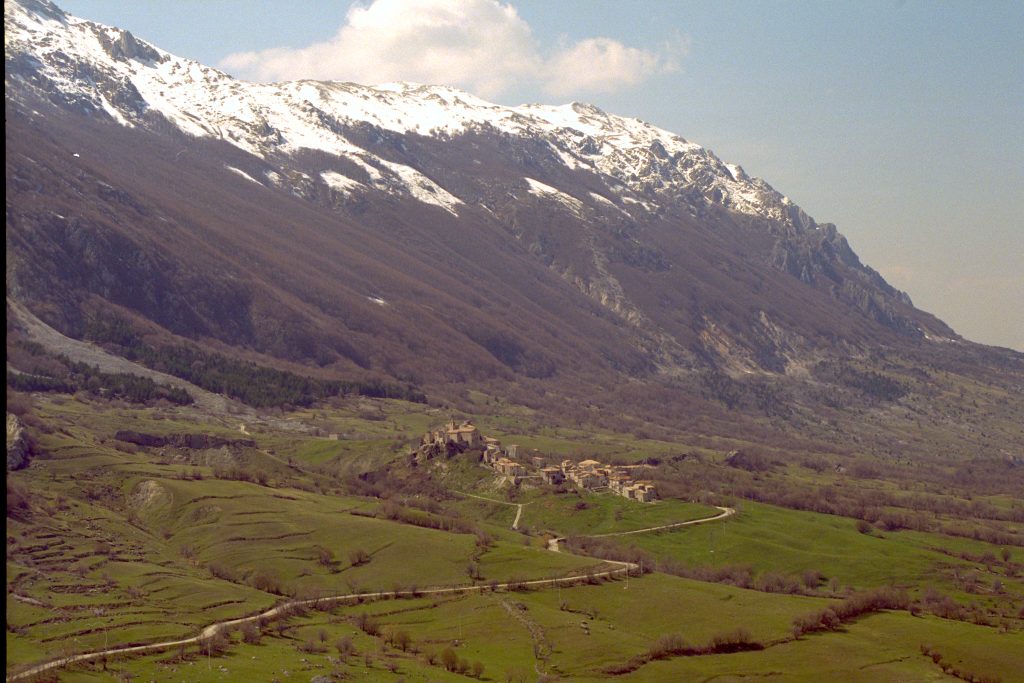
Roccamorice lies in the mountains of the Abruzzo region of Italy, 550 meters above sea level (about 1,700 feet). Immigrants to the US often refer to Roccamorice as La Rocca. The derivation of the name Roccamorice is unknown. Some say it came from connecting two words: rocca and moricci.
Roughly one-third of Abruzzo is made up of national parks and nature preserves. Roccamorice itself lies within the boundaries of the National Park of Maiella. Anyone driving up the road to this small town on the hill will be struck by the beauty of the surrounding area.
The known history of the area begins with human remains from the Neolithic period. The Roman Empire used slaves to mine the area for precious metals and asphalt. Asphalt mining continued through the nineteenth century. Over centuries, the area became agricultural and pastoral and was inhabited by shepherds, which you can still see in the hillsides tending their flocks.
To protect themselves from bad weather, the shepherds who spent days and nights on the mountainsides built structures from mounds of stacked stones. The Italian word for wall is mura, and such mounds or walls of stones were called moricci. The word rocca translates as fortress, and in 780 a fortification was built to defend against invaders from across the Adriatic Sea. The fortress is no longer there, but there are signs that a fortified wall once encircled the village. A 60-foot-tall stone tower is all that’s left of that fortification. The village restored it in the 1990s with a wooden roof and an interior staircase for visitors to climb.
From the fifteenth to the eighteenth century, La Rocca was dominated by the wealthy Valignani family. Everyone in the village worked for this family’s estate, planting corn and wheat, growing alfalfa, grapes, olives, and saffron, tending sheep in the mountains, or serving the family on its large estate.
Roccamorice has a distinctive triangular shape created by two rivers, the Lavino and the Lanello, that ran down two sides of the village from the mountain above. Over centuries, the rivers cut steep ravines which served to protect the village on three sides from any invaders. The rivers are dry today.
In the early 1900s, the defensive wall around the village was removed and replaced by railings. The railings allow people to safely look at the Belvedere (beautiful view) of the ravines below.
A 1951 change to US immigration law allowed more Italians to emigrate and by 1961 the population was down to 2,100. By 2019, the population had dropped to 933.

A monument in memory of all the emigrants who were forced to leave to find a better life, was erected at the edge of town. The monument reads: “To Emigrant Brothers. Always in the Heart. The Love of the Homeland.”
Today, Roccamorice is a sleepy community rarely visited by tourists. There are no hotels, but there are a few rentals available nearby. There are two bars on the main drag where one can get a beverage and an excellent sandwich and be studied endlessly by the same six men who sit there all the time.



